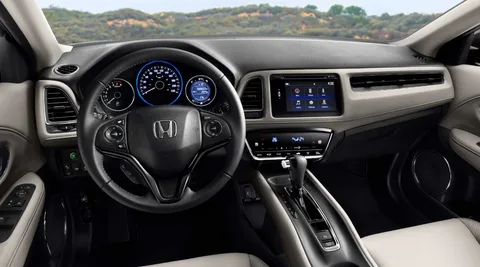The importance of a reliable and efficient heating system cannot be overstated as the winter months approach. But with the plethora of options available, it’s easy to get lost in the jargon and technicalities of modern heating technology. One system that has gained popularity in recent years is the HRV unit. This revolutionary solution promises to provide warmth, freshness, and energy efficiency. But what exactly is an HRV heat unit, and how does it work its magic? In this comprehensive guide, we’ll delve into the mysteries of HRV heat units, exploring their benefits, how they differ from traditional HVAC systems, and what you need to know to decide whether an HRV heat unit is right for your home or business.
What is an HRV Recovery Unit?
At the heart of a well-designed heating and ventilation system lies a crucial component that plays a vital role in maintaining a healthy, comfortable, and energy-efficient indoor environment: the Heat Ventilation (HRV) unit. This innovative technology is designed to recover the heat energy that would otherwise be lost during ventilation and recycle it to provide a consistent and cost-effective supply of warm air to your home or building.
Essentially, an HRV unit is a clever piece of equipment that works by exchanging the heat energy between the stale air being extracted from a building and the fresh air being drawn in, thereby minimizing the need for additional heating and reducing energy waste. By harnessing the warmth from the outgoing air, HRV units can provide a significant proportion of the heating requirements, resulting in substantial energy savings and a reduced carbon footprint.
 How Heat Recovery Units Work
How Heat Recovery Units Work
At the heart of every Heat Recovery system lies a sophisticated yet elegantly simple technology that has revolutionized how we heat and ventilate our homes and buildings. The core component of an HRV system is the heat recovery unit, a marvel of engineering that harnesses the warmth and energy from outgoing stale air and transfers it to fresh incoming air, providing a continuous flow of clean, warm air while minimizing heat loss. This ingenious process begins when stale air from the building is drawn into the HRV unit, which passes through a series of narrow tubes and channels.
As the stale air flows through the unit, it releases its heat energy to a network of thin, heat-conductive plates. Meanwhile, fresh air from outside is drawn into the unit, which is warmed by the heat energy absorbed by the outgoing air. This warmed air is circulated back into the building, providing a comfortable and consistent indoor climate. Through this clever process, HRV heat units can recover up to 80% of the heat energy that would otherwise be lost, making them an incredibly efficient and eco-friendly solution for heating and ventilation.
Benefits of Hrv Heat Recovery
Regarding efficient heating and ventilation, HRV heat recovery systems stand out. These innovative systems offer many benefits that can transform how you heat and ventilate your home or building. Here are just a few of the advantages of HRV heat recovery:
Energy Efficiency
One of the most significant benefits of HRV heat recovery is its ability to reduce energy consumption. By recovering heat from extracted air and transferring it to fresh air, HRV systems minimize the need for additional heating, resulting in lower energy bills and a reduced carbon footprint.
Improved Indoor Air Quality
HRV heat recovery systems ensure a consistent supply of fresh air while removing stale air and pollutants from the indoor environment. This leads to improved indoor air quality, making it ideal for homes, offices, and public spaces where air quality is paramount.
Reduced Humidity and Condensation
HRV systems are designed to remove excess moisture from the air, reducing humidity and condensation. This prevents mould and mildew growth and reduces the risk of structural damage and decay.
Increased Comfort
HRV heat recovery systems provide a comfortable and healthy indoor environment by maintaining a consistent temperature and humidity level. This is particularly important in buildings with high occupancy rates, such as offices, schools, and healthcare facilities.
Cost Savings
The efficient operation of HRV heat recovery systems translates to significant cost savings over time. By reducing energy consumption and minimizing the need for additional heating, you can enjoy lower energy bills and a more sustainable heating and ventilation solution.
HRV vs Traditional HVAC Systems
Regarding heating and ventilation, homeowners and builders alike have long been torn between the conventional HVAC (Heating, Ventilation, and Air Conditioning) systems and the newer, more innovative HRV (Heat Recovery Ventilation) units. While traditional HVAC systems have been the go-to solution for decades, HRV heat units have been gaining popularity in recent years, and for good reason. Unlike traditional HVAC systems, which often waste energy by constantly heating and cooling the air, HRV units harness the heat energy from stale air and transfer it to fresh air, providing a more efficient and sustainable way to heat and ventilate your home.
This innovative approach reduces energy consumption and improves indoor air quality, making it a more appealing option for those looking to create a healthier and more eco-friendly living space. By understanding the key differences between HRV and traditional HVAC systems, you can make an informed decision about which solution is best suited for your specific needs.
Choosing the Right HRV Heating Unit for Your Home or Business
When selecting the perfect HRV heating unit for your home or business, several key factors must be considered. You need to think about the size of your space and the specific heating requirements, budget, and personal preferences. With so many options available, it can be overwhelming to navigate the market. In this section, we’ll break down the essential considerations to help you make an informed decision.
Assessing Your Space and Heating Needs
The first step in choosing the right HRV heating unit is to assess your space and heating needs. Consider the size of your home or business, the number of occupants, and the insulation quality. This will help you determine the required heat output and airflow. You should also consider specific areas that need heating, such as living rooms, bedrooms, or offices.
Understanding HRV Unit Types and Capacities
HRV heating units come in various types and capacities, each designed to cater to specific needs. There are units suitable for small apartments, large commercial spaces, and everything. You’ll need to consider the unit’s power output, fan speed, and noise level to ensure it meets your requirements.
Considering Your Budget and Energy Efficiency
Budget is a crucial factor in choosing the right HRV heating unit. You’ll need to balance the upfront cost with the long-term energy savings and potential maintenance costs. Look for units with high energy efficiency ratings, which can help you save money on your energy bills.
Additional Features and Customization Options
Some HRV heating units have additional features like air purification, humidistats, or smart sensors. Consider whether these features are essential to your needs and whether they justify the extra cost. You may also want to explore customization options, such as bespoke designs or installation, to ensure the unit fits seamlessly into your space.
Warranty, Maintenance, and Support
Finally, don’t forget to consider the warranty, maintenance, and support the manufacturer offers. A comprehensive warranty and reliable customer support can provide peace of mind and protect your investment. Regular maintenance is also crucial to ensure the unit operates efficiently and effectively over its lifespan.
Energy Efficiency with HRV Heat Exchanger
One of the most significant advantages of HRV heat exchanger units is their remarkable energy efficiency unlike traditional heating and ventilation systems, which often waste energy by expelling warm air outside and letting cold air in, HRV heat exchangers Work by recovering heat energy from the stale air extracted from the building and transferring it to the fresh air being drawn in. This process not only reduces the amount of energy required to heat the building but also minimizes the loss of heat through ventilation.
As a result, HRV heat units can help reduce energy consumption by up to 50%, leading to significant cost savings and a reduced carbon footprint. Additionally, the heat exchanger’s ability to recover heat energy from the exhaust air also reduces the load on the heating system, extending its lifespan and reducing maintenance costs. With an HRV heat unit, you can enjoy a comfortable and healthy indoor environment while minimizing environmental impact.
Features of an air recovery unit
When it comes to efficient heating and ventilation, an air recovery unit (HRV) is a crucial component. These units are designed to recover heat from extracted air and transfer it to fresh air, providing a comfortable and healthy indoor environment. But what makes an HRV heat unit so effective? Let’s dive into the features that make them a game-changer.
Heat Exchanger: The Heart of the System
The heat exchanger is the core component of an HRV heat unit. It transfers heat from the extracted air to the fresh air, ensuring the warmth is not lost. This efficient heat transfer process significantly reduces energy consumption, making it a cost-effective solution for homeowners.
Advanced Filtration System: Clean Air Guaranteed
A good HRV heat unit has an advanced filtration system that captures air pollutants, allergens, and other impurities. This ensures that the air circulating in your home is clean and fresh, providing a healthy environment for you and your family.
Intelligent Sensors: Optimizing Performance
Modern HRV heat units are equipped with intelligent sensors that monitor indoor air quality and adjust the system’s Performance accordingly. These sensors detect temperature, humidity, and air quality changes, ensuring that the system operates at optimal levels.
Quiet Operation: Unobtrusive Performance
One of the most significant advantages of HRV heat units is their quiet operation. Unlike traditional heating systems, HRV units are designed to operate silently, ensuring you can enjoy a peaceful environment without distractions.
Compact Design: Space-Saving Solution
HRV heat units are designed to be compact and space-efficient, making them perfect for homes with limited space. They can be easily installed in small areas, such as closets or utility rooms, without compromising Performance.
Conclusion
In conclusion, HRV heat units are a game-changer in terms of efficient heating and ventilation. By understanding how they work, their benefits, and how to choose the right one for your needs, you can unlock a world of comfort, energy savings, and improved indoor air quality. Whether you’re a homeowner, architect, or builder, incorporating HRV heat units into your design or existing space can significantly impact occupants’ overall health and well-being. With their ability to recover heat, reduce energy consumption, and provide a constant supply of fresh air, it’s no wonder why HRV heat units are becoming increasingly popular in modern buildings.
Frequently Asked Questions:
Q: What is the average lifespan of an HRV heat unit?
A: The average lifespan of an HRV heat unit is around 10-15 years, depending on usage and maintenance.
Q: Can I install an HRV heat unit myself?
A: While it’s possible to install an HRV heat unit yourself, hiring a professional is recommended to ensure proper installation and optimal Performance.
Q: Are HRV heat units expensive to maintain?
A: No, HRV heat units are relatively low maintenance and can be cleaned and replaced easily, making them a cost-effective option in the long run.
Q: Can I use an HRV heat unit in a small space?
A: Yes, HRV heat units come in various sizes and can be used in small spaces, such as apartments or tiny homes, to provide efficient heating and ventilation.
| Other Good Articles to Read |
| Blogs-Nation |
| Blogs-Peoples |
| Bryan Smith Blogs |
| Intellect Blogs |
| The Fault In Our Blogs |
| Blogs Eu |
| Oz Forums |
| Recruitment Blogs |
| Zet Blogs |
| Id Blogs |
| Blogs Tudiolegale |
| Related Business Listings |
| Contact Directory |
| Local Business Profiles |

